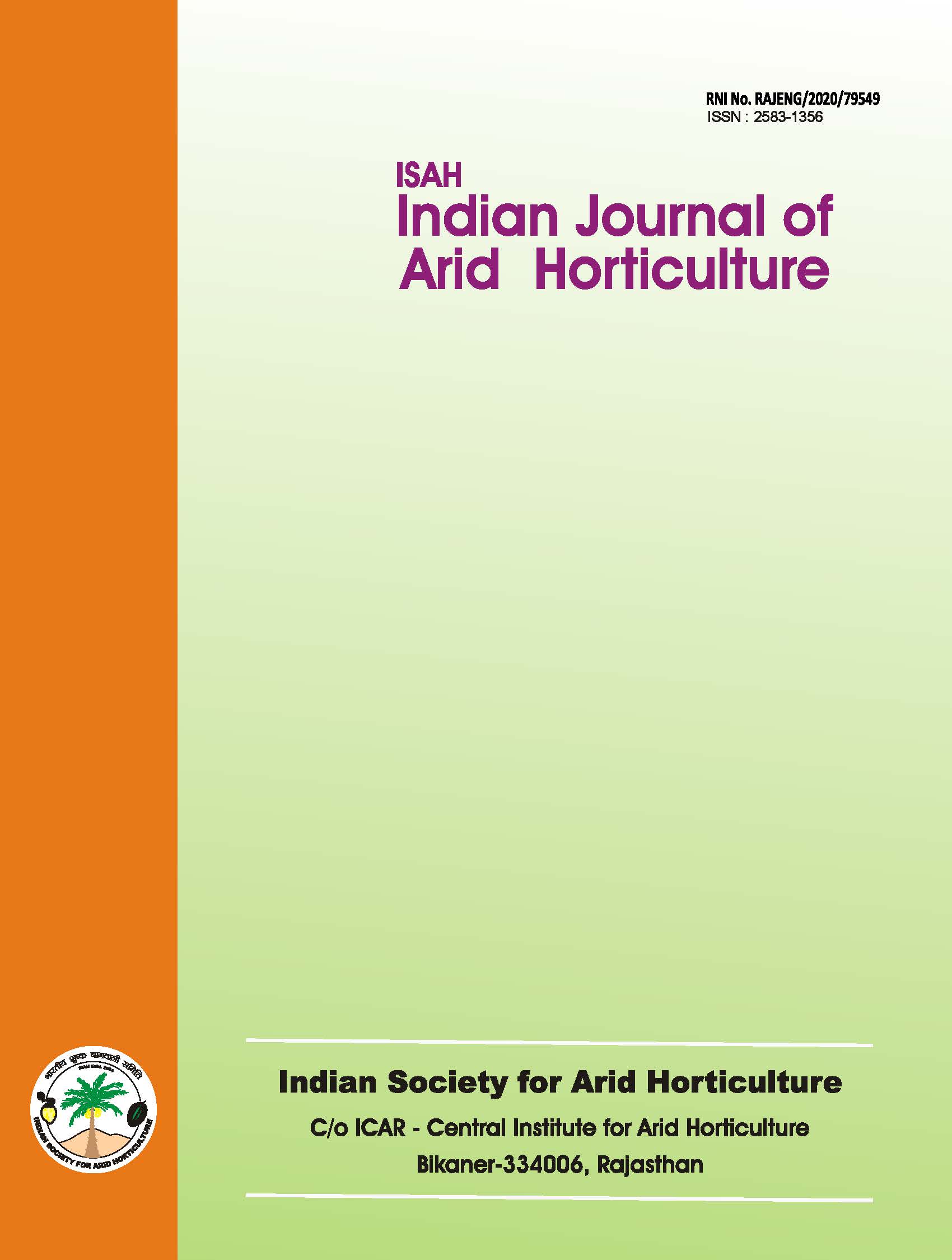Biodiversity of vesicular arbuscular mycorrhizal (VAM) fungi in horticultural production system in northern Rajasthan
Keywords:
Glomeromycetes, Vesicular Arbuscular Mycorrhiza, soil, arid region and agro-ecosystems.Abstract
The diversity of vesicular arbuscular mycorrhizal (VAM) fungi in horticultural production systems of small farmer agro systems was analysis. Vesicular arbuscular mycorrhizal fungal symbioses are playing a key role for P uptake by horticultural crops grown there. The objective of this study was to determine AM fungal community's in cropping systems and to identify soil factors affecting their frequency and diversity. Totally 4 VAM fungal species were identified. It is concluded that it will be advisable for farmers to inoculate their horticultural crops with selected Mycorrhizal inoculants during the nursery stage, as it cannot be predicted from the soil conditions whether the native vesicular arbuscular mycorrhizal fungal community is sufficient to sustain a stable horticultural production in the regionDownloads
References
Allen, M.F. and Allen, E.B. 1992. Development of mycorrhizal patches in a successional arid ecosystem. In: Read, J.D., Lewis, D.H., Fitter, A.H. and Alexander, I.J. (eds.) Mycorrhizas in Ecosystem. pp. 164-169. C.A.B. International, Wallingford, UK.
Bakshi, B.K. 1974. Mycorrhiza and its role in Forestry. PL480 Project Report, F.R.I., Dehradun, India.
Harley, J.L. and Smith, S.E. 1983. Mycorrhizal Symbiosis. Academic Press, London. p. 461.
Jansa, J., Mozafar, A., Khun, G., Anken, T., Ruh, R., Sanders, I.R. and Frossard, E. 2003. Soil tillage affects the community structure of mycorrhizal fungi in maize roots. Ecological Applications, 13: 1164-1176.
Kiran Bala, Rao, A. V. and Tarafdar, J.C. 1989. Occurrence of VAM associations in different plant species of the Indian desert. Arid Soil Research and Rehabilitation, 3: 391-396.
Oehl, F., Sieverding, E., Ineichen, K., Madar, P., Boller, T. and Wiemken, A. 2003. Impact of land use intensity on the species diversity of Arbuscular mycorrhizal fungi in agroecosystems of Central Europe. Applied and Environmental Microbiology, 69: 2816-2824.
Oehl, F., Sieverding, E., Ineichen, K., Ris, E.A., Boller, T. and Wiemken, A. 2005. Community structure of arbuscular mycorrhizal fungi at different soil depths in extensively and intensively managed agroecosystems. New Phytologist, 165: 273-283.
Schenck, N.C. and Pérez, Y. 1990. Manual for the Identification of VA Mycorrhizal Fungi, 3rd edition, Synergistic, Gainesville, Florida, U.S.A. 241p.
Schüssler, A., Schwarzott, D. and Walker, C. 2001. A new fungal phylum, the Glomeromycota: phylogeny and evolution. Mycological Research, 105: 1413-1421.
Sieverding, E. 1991. Vesicular-Arbuscular Mycorrhiza Management in Tropical Agrosystems. GTZ, Eschborn, Germany. 371p.
Smith, S.E. and Read, D.J. 2009. Mycorrhizal Symbiosis. Academic Press, London. 605p.
Tarafdar, J.C. and Rao, A.V. 1997. Mycorrhizal colonization and nutrient concentration of naturally grown plants on gypsum mine-spoils in India. Agriculture, Ecosystems and Environments, 61: 13-18.
Trappe, J.M. 1987. Phylogenetic and ecological aspects of mycotrophy in the angiosperms from an evolutionary standpoint. In: Safir, G.R. (Ed.). Ecophysiology of VA Mycorrhizal Plants. CRC Press, Boca Raton, Florida. pp. 5-25.
Veenendaal, E.M., Monnaapula, S.C., Gilika, T. and Magole, I.L. 1992. Vesicular arbuscular mycorrhizal infection of grass seedlings in a degraded semi-arid savanna in Botswana. New Phytologist, 121: 477-485.

